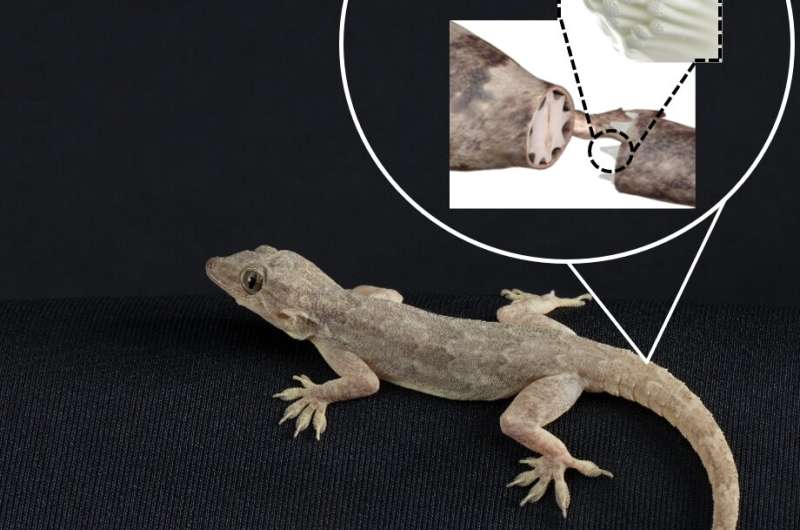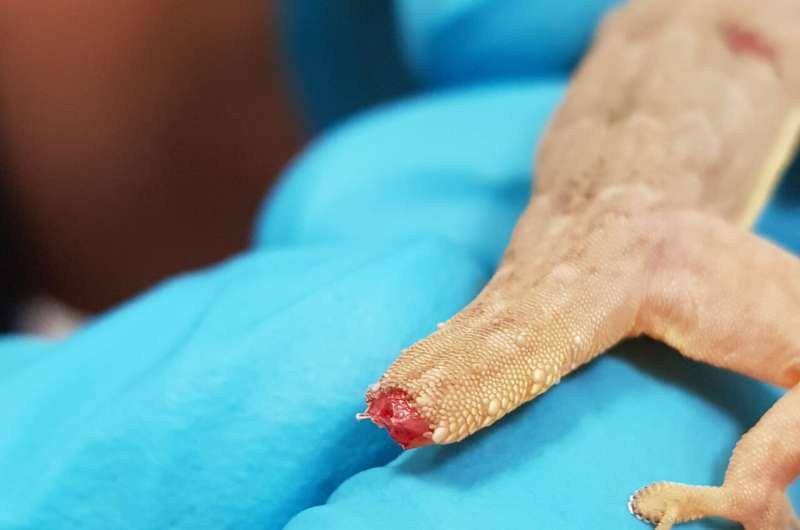February 18, 2022 report
How the lizard tail can remain intact normally but break off when needed

A team of researchers affiliated with several institutions in the United Arab Emirates and the U.S. has discovered the mechanism that allows lizards to maintain a tail during normal activities and then to release it when they need to avoid predators. In their paper published in the journal Science, the group describes using different types of microscopy to study lizard tail anatomy. Animangsu Ghatak, with the Indian Institute of Technology Kanpur, has published a Perspectives piece describing the work by the researchers in the same journal issue.
Many species of lizards are able to shed their tail to escape a predator, and prior research has revealed the segmented anatomy of such tails. But until now, the quick release mechanism involved in shedding a tail has not been well understood. In this new effort, the researchers took a very close look at all the parts involved in tail shedding and then created physical models to mimic how the process works.
The work began by tugging on lizard tails just hard enough to prompt the lizards to let them go. They then cut the torn edges from the tail ends to examine via microscope.
The researchers found that both ends were covered with micropillars bundled in mushroom shapes. The tip of each micropillar was covered in nanopores, which the researchers described as working like plugs that fit into sockets. When the lizard sheds its tail, they found the plugs are pulled from the sockets.

The researchers next built a physical model of the tail to learn more about how all the tail parts worked together. They found that the plugs and sockets allowed for strong adhesion, even when stressed. But when the lizard twisted its tail in a certain way, the seal between the plug and socket was broken, allowing the tail to fall away. They suggest their model could prove useful in other endeavors, such as in the creation of robot limbs.
More information: Navajit S Baban et al, Biomimetic fracture model of lizard tail autotomy, Science (2022). DOI: 10.1126/science.abh1614
Animangsu Ghatak, How does a lizard shed its tail?, Science (2022). DOI: 10.1126/science.abn4949
Journal information: Science
© 2022 Science X Network



















